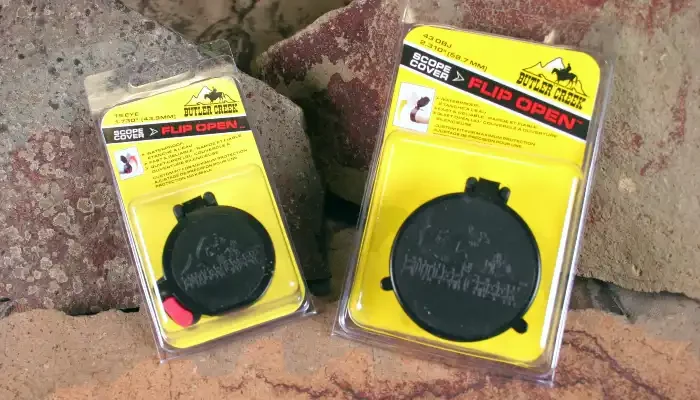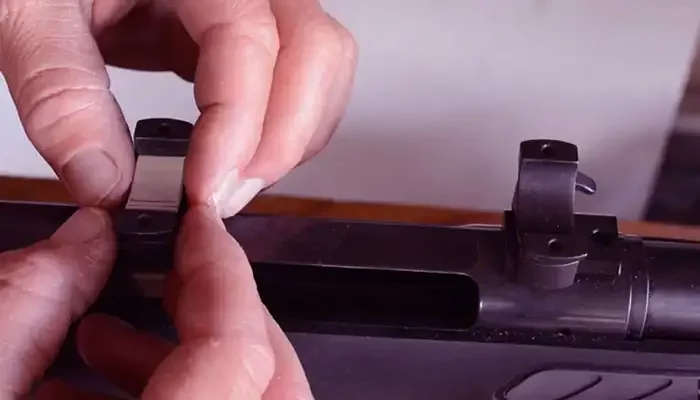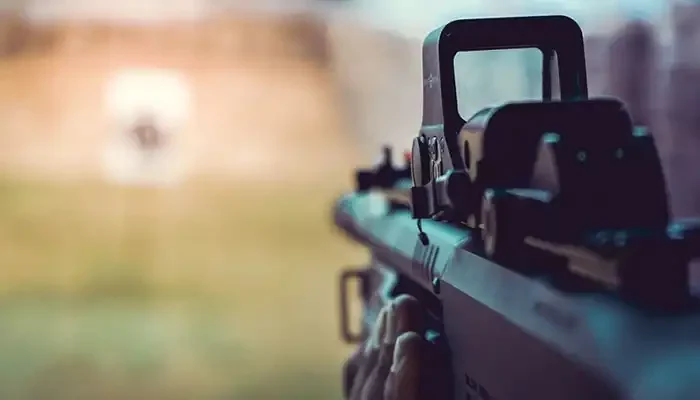Once, one novice shooter was very tense about buying a scope for having less money. He was worried that he could not buy a versatile scope and could not continue his shooting experience because of the lack of money.
Then, I suggested to him that for buying a scope, money is not the only factor. There are more significant things to consider when buying a rifle scope. Choosing one of best rifle scopes really depends on your requirements.
So, there are a variety of “correct” scopes available. Knowing what you want is more important than what you think you “need”.
So, if you are puzzled like the shooter and do not have any idea of how to choose according to your needs, then go through this article. I guess it will help you to a great extent.
Consider The Significant Causes You Shoot Your Rifle
Are you going to use the scope of your gun for hitting targets or simply keep the weapon for self-defense?
If you shoot at the quarry, how far away do you generally shoot from?
Well, The primary purpose you need to consider is distance. Keep in mind these things –
- Is your range 100 yards or are you going for long-distance shooting?
- The place along with the size of your prey is also the factor. Small game hunters don’t need the zooming more than 10x but big game hunting needs a better version.
Remember, Distance is the most important thing you need to focus on before buying a rifle scope. Scopes come with various types of magnification according to your range. Magnification refers to the power level increment. So, the styles come like this pattern – “3-9×40”. Here the numbers to the left of the “x” illustrate how much bigger the target will look than to the naked eye. In addition, “3x” means the scope will enlarge your target three times:
- Recreational hunters or basic target shooters can use carbines. The scope with 3.5x-9x magnification can be compatible with the carbines.
- Anything less than 10x is good for off-hand shooting. Moreover, 12x-20x magnification telescope scopes may be required for full-scale rifles.
- It’s illogical to spend extra money for higher magnification. 3-9x magnification will be appropriate for targeting within 100 yards. If you are targeting from 750 yards, a scope with 5-30x magnification can fill your needs.
Keep the best focus on magnification before buying a rifle scope.
Choose a Fixed One For Lowering the Budget & Variable One For A Greater Range
Think rationally before choosing a higher or variable scope. If you shoot occasionally, what is the benefit of buying high-magnification scopes or variable scopes?
Suppose, you bought a scope with 3-9x magnification. It has a greater range and you can adjust the zoom anywhere from three times normal size to nine times normal size.
This scope is definitely going to cost you more as this scope is versatile. But if you spend your money on the higher construction and buy a fixed scope, it will be more logical. So, ask yourself which magnification you will need more often.
- For basic hunting or midrange scenarios, a fixed 4x scope will be effective and cheap and you can use it very often.
- If you are going generally for long-range shooting, a high-powered fixed scope with 24x, 36x, or 40x will be more cost-effective than using a variable scope.
Consider Environmental Conditions & Check How Solid The Scope Feels
The scope needs to be at least fog-proof otherwise you could not utilize it properly in every situation. If your scope is not sturdy enough to hold up in extreme events, there is no benefit of having outstanding features.
So, my pals, it’s a suggestion for you to spend some extra penny on high-end weatherproofing. Moreover, check all the attachments and there should not be any wiggling or looseness.
Read The Objective Lens Diameter To Examine How Much Light Goes In
The number after the zoom length is generally the objective lens diameter or the size of the glass at the far end of the scope. Moreover, this fixes the diameter of the body of the scope. The larger the objective lens, the more light can enter and help to target in low light conditions.
- The objective zoom diameter is the number after the “x”. So, a 3-9×40 scope has a 40 mm diameter. You can get an objective lens ranging from 20 mm to 72 mm. The larger objective lens enters more light but higher magnification lessens available light.
- Keep in mind that a 50mm glass bell or larger needs the rifle scope to be mounted higher. So, it is recommended to mount a rifle scope as low as possible without the objective bell touching the barrel. The reason is to remove the effect on scope-to-eye alignment and consistency of cheek weld.
Look For A Higher Eye-Relief In Quality Scopes
It’s an important factor. Eye relief underpins how far your head needs to be to see everything. It’s important to prevent “scope eye” when the recoil of the gun kicks our face with the scope. The recoil rate determines the range of eye relief.
- Most of the guns have 4-inch eye-relief but the bigger guns can go up to 16-20 inches.
- If you shoot with a bench rest, examine the eye relief on a bench rest.
- Always test your scope in your way.
Know Parallax Correction Knob- Add Consistency & Regularity To Your Shots
Parallax is usually not the feature of low magnification scope. It happens in the high power scopes when the line of sight is not properly lined up. So, to remove parallax, there is a parallax knob. It is a knob with adjustable objectives to help you dial in distance.
- If you are shooting a 300 meters away, set the adjustable objective to 300 yards. Now, your scope will be calibrated to render you the best shot at this distance.
Choose The Reticle That Looks The Most Com- For-Table To You

The reticle is also known as a crosshair. It helps to predict where the bullet will go. There is a huge range of reticles. The crosshairs’ thickness is going to have an impact on your shooting.
Larger reticles are preferred to see in low lights but can cover up the target if the target is far away. Thinner crosshairs permit the shooter to be accurate but are more troublesome to see in low light.
There is also scales in the reticle and tick mark to compensate for the bullet’s drop at a greater distance. So, if you are a newbie, stick to the classic “duplex” reticle.
Mil-Dots: A dotted crosshair permits to estimate of the target’s distance.
BDC: Bullet Drop Compensator is the full form of the abbreviation “DC”. It has a bunch of horizontal lines on the lower half of the crosshairs to assist you in the adjustment of distance.
Choosing The Right Focal Plane
There are two types of scopes where the reticle is positioned either in the first or second plane.
- If the reticle is positioned in the first plane, the reticle maintains the same perspective as the target size and it goes for long-range shooters.
- If the reticle is placed in the second focal plane, you can increase the power zoom, the target appears larger.
- There is also a reticle named illuminated reticle that helps you to help in a low light situation.
Differentiate Two Key Adjustment Systems
You need to adjust your scope as they don’t come working right.
- MOA is one kind of right system. 1 MOA represents 1 inch when shooting at 100 yards. You can adjust with 1 click if you miss by one inch.
- MRAD is slightly complicated since 1 MRAD is roughly 3.6 inches at 9.1 yards.
Keep aware of the position of the knobs.
Light Transmission – Is An Important Factor!
If you can’t see your target, you can’t shoot it. Light transmission is important because it allows the lights to come in.
- Supper high-end scopes permit a high amount of light transmission. But it costs more.
- The light transmits in a high amount in the longer range.
So if you want not to miss your target then you should keep in mind about light transmission before buying a rifle scope.
Coating System – Need To Think Of It!
Coatings are there to provide you with fog-resistance and water resistance. It affects the price. There are various types of coatings –
- Coated: This depicts that one lens surface at least has one coating.
- Fully-Coated: Here, a single coating layer encompasses all surfaces.
- Multi-Coated: There are multiple layers in one surface in this category.
- Fully Multi-Coated: There are multiple layers on all the surfaces.
- Hydrophilic and Hydrophobic Coatings: These are meant to shed water from the lens.
Turrets And Tube Size Still A Fact.
Turrets are there for the adjustments named elevation and windage. The ballistic turrets are recommended and non-tactical models have ¼ “ or 1/8” adjustments.
There are generally two tube sizes: 30 mm and 1 inch. The larger tube doesn’t mean that light will enter in a great amount. Again, this factor is important for the novices since they will need the right size of mounting rings for the scope.
Conclusion
Did you get satisfaction by going through the article? I can see a bunch of smiling faces there! I guess many of you are now eager to buy a rifle scope and keep in mind the things to consider when buying a rifle scope.
And Of Course, I would like to say that “if this article was helpful to you” then Hit the share button and Stay with us.
Hi, I’m Brent Hansford. A writer turned hunter & now sharing my love for the sport through writing. As I practically breathe weapons, I firmly believe I’m capable of providing you with new knowledge about firearms and hunting. My mission is to help more people get better at hunting & master the weapons. Let me help with unleashing the beast within you!



